Nagoya, Japan, blends history, culture, and modern attractions. From Nagoya Castle to local cuisine and vibrant shopping districts, explore the best sights with this essential travel guide.

Nagoya, Japan, is a dynamic city that seamlessly blends history, culture, and modern attractions. With its rich heritage, mouthwatering cuisine, lively shopping districts, and engaging museums, Nagoya offers something for every traveler.
Here’s your essential Nagoya travel guide, highlighting the best activities and must-see sights. We’ve also included a few extra must-visit stops along the way, such as a fun trip to Legoland, a visit to Japan’s second-largest shrine, and a relaxing retreat at a temple in the heart of the city!
Table of Contents
Nagoya Castle
If you’re a fan of Japanese castles like my family, then Nagoya Castle is a must-visit during your stay in Nagoya. Whenever we travel around Japan, we always try to visit any castles in the area.

Originally built in 1609 as a residence for the Owari branch of the Tokugawa family, the castle boasts impressive architecture, deep moats, and massive stone walls that once protected its inhabitants. Although much of the castle was destroyed during World War II, the current structure, rebuilt in 1959, offers a captivating insight into Japan’s feudal past.

Honmaru Palace
Next to the castle is the Honmaru Palace (本丸御殿), originally built in 1612 as the residence and government office for the first lord of Owari Province. It underwent a 9-year (2009–2018) complete reconstruction, carried out in three stages using traditional materials and construction methods.

The attention to detail in recreating the Honmaru Palace is mesmerizing. Every aspect of the palace, from the artwork to the architectural elements, has been skillfully crafted based on historical pictures and records.

Walking through the grand palace, we imagined the lives of the lords from centuries past; they must have lived in incredible luxury. After touring the palace, head over to Nagoya Castle, a concrete reconstruction with eight floors in total. The creature associated with the castle is called Kinshachi (金鯱)—an imaginary sea animal with the head of a tiger and the body of a fish.

The exhibitions on the second floor included models of the castle and the city during the Edo period. You can see a beautiful visual model of the Honmaru Palace structure on display, along with artworks that were saved before the fire that burned down Nagoya Castle.

The third floor featured a reproduction of a castle and life in the town during the 1600s, including fancy carriages used for carrying lords and ladies.

The fourth floor contained collections of armor and swords on display, while the fifth floor featured a detailed history of Nagoya Castle, a stone pull exhibit, and a full-scale replica of Kinshachi for visitors to experience and enjoy. Finally, from the observation room on the top floor, visitors can enjoy a beautiful view of the city.

Nagoya City Science Museum
After learning about the city’s rich history at Nagoya Castle, let’s fast-forward to the future and head to the Nagoya City Science Museum. Our children had an absolute blast at the museum during our visit, as many exhibits are hands-on and allow them to touch and experiment.

There were so many fun and interactive exhibits for the children, including a human hamster wheel! Each floor is divided into two sections; here is part of the second floor, which focuses on the wonders of the Earth.


The third floor was dedicated to mechanics and technology, featuring exhibits that showcased the inner workings of various machines, including a rice cooker.

The fourth floor had exhibits on the principles of nature, exploring scientific concepts such as gravity, electricity, and magnetism. Visitors can experience a deep freezing lab and learn about life in the polar region (for a fee).

The bottom part of the museum’s sphere is an amazing area dedicated to space, with a video of what it’s like to view Earth from the International Space Station. The planetarium dome spans 35 meters, ranking among the largest planetariums in the world! Inside the planetarium, the projector is at the center of the room. The entire show is conducted in Japanese, and the story is not easy for foreign speakers to follow. It’s best to skip it if you don’t speak Japanese fluently.

Noritake Garden
After immersing ourselves in science and technology, it’s time to enjoy some art. We visited the picturesque Noritake Garden and watched talented artists work on beautiful pottery and plates.
Noritake Garden is a peaceful oasis in the heart of Nagoya, dedicated to the city’s rich ceramics history. Spread across lush grounds, the garden features a craft center, museum, and workshops. The red-brick buildings, once a bustling ceramics factory, now house exhibitions that detail the craftsmanship behind Noritake’s world-renowned ceramics.

In the welcome center, which is free, you can learn about the history of the Noritake Company and its visionary founders. Inside, there are detailed models of how the modern-day kiln works, providing insight into the craftsmanship behind Noritake’s ceramics.

There is a fee for adults to enter the craft center and museum. On the first two floors, craftsmen work on projects, demonstrating hand-painting techniques at their workstations. Additionally, there are painting workshops where you can create your own designs on plates and cups.


The top two floors housed the museum, showcasing beautiful collections from the past 100 years of Noritake’s history. Although no pictures were allowed in the building, it was amazing to see the detailed hand-painting work the artists were creating right in front of us. If you can appreciate details and fine art, we highly recommend visiting the museum. The pieces and sets on display are simply marvelous, each one requiring meticulous attention to detail and creativity to create.
SCMAGLEV and Railway Park
Located just a short train ride from Nagoya Station, the SCMAGLEV and Railway Park is a paradise for train lovers. With an impressive collection of historic and modern trains, including the record-breaking Maglev, this museum takes visitors on a journey through Japan’s railway history.

Immediately upon entering the museum, you will find a large room with three trains that have set speed records at various times throughout history: a steam train, an experimental shinkansen, and a MAGLEV train.
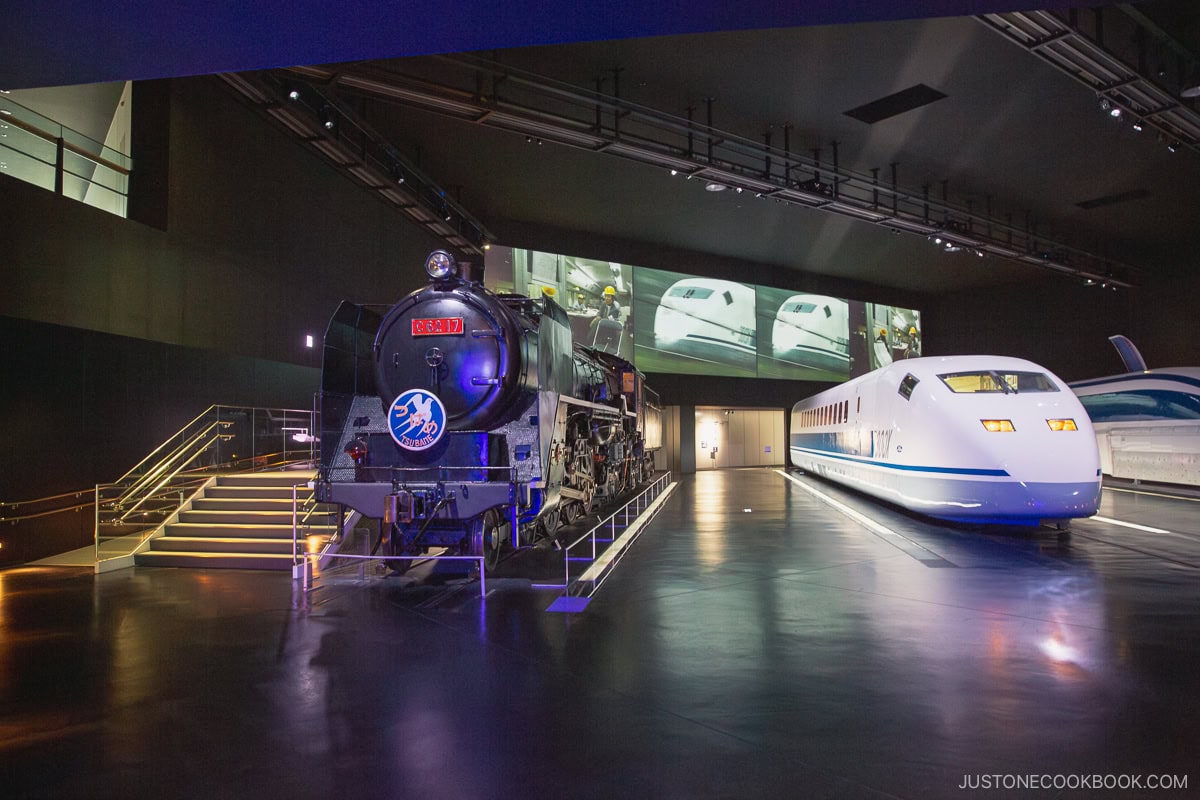
On the giant screen behind the train, there’s a video playing that highlights the speed records these trains have set. You can find various trains on display, each accompanied by information on their historical significance, specifications, and more, including the Guinness World Record certificate for the world’s fastest train (581 km/h or 361 mph)! Many of them allow you to walk inside and experience what riding them is like!

After the first room, you will enter an even larger space with over 32 trains! From steam locomotives to the latest Shinkansen models, the park offers a hands-on experience where you can explore the interiors of the trains and learn about their technological advancements.

Don’t miss the opportunity to drive a train simulator, available for a small fee. The museum also features engaging exhibits that demonstrate how rail technology has evolved, including an earthquake alert system and a display on track maintenance.

The lunch café offered… you guessed it, train bentos from various parts of Japan! These are called ekiben and are one of the best parts of riding a shinkansen!
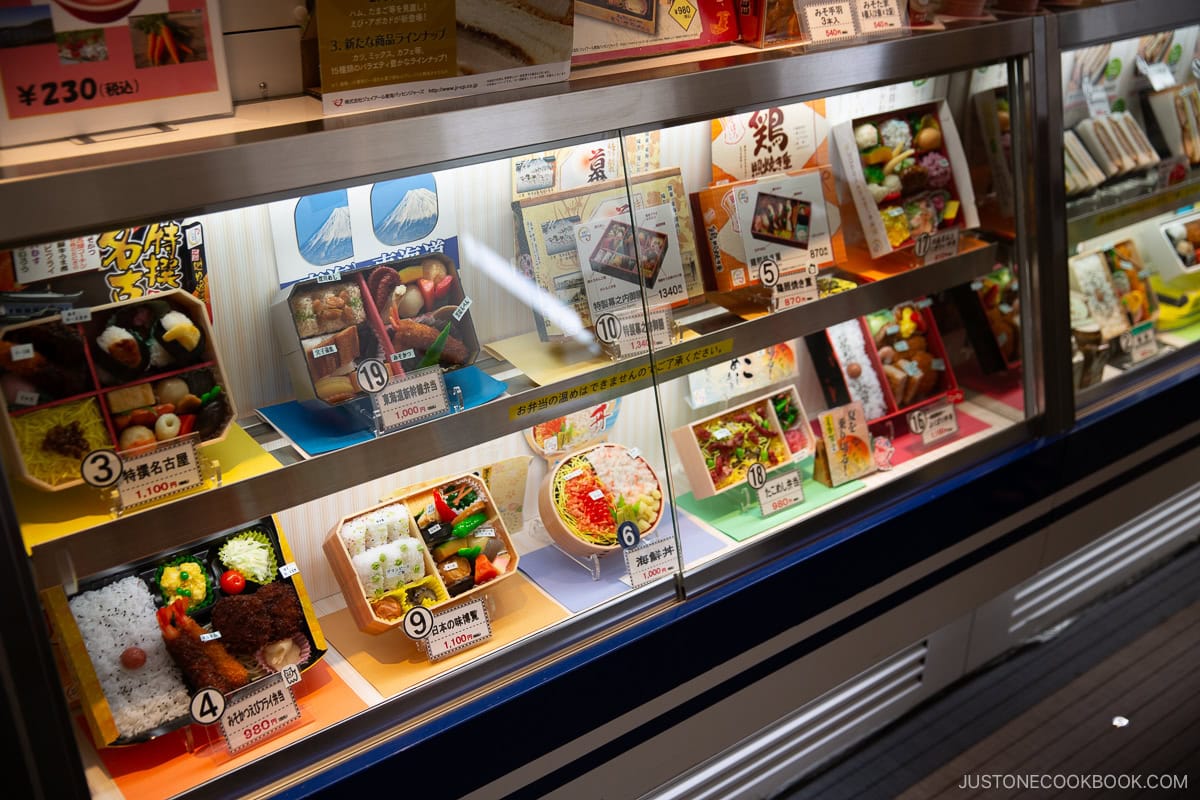
After enjoying your ekiben, you can explore the theater that showcases the progression of trains and the museum space upstairs, which is filled with artifacts and history about trains in Japan. One of the most interesting rooms features a large model of cities such as Tokyo, Nagoya, Kyoto, Osaka, and Kobe, allowing you to see what life would be like with the trains running through them. The coolest part is when all the trains start moving; the exhibition lights up and comes to life!

Toyota Commemorative Museum of Industry and Technology
After visiting the railway park, we continued with the technology theme and visited the Toyota Commemorative Museum of Industry and Technology in Nagoya. The museum is dedicated to celebrating the two industries founded by Sakichi Toyoda: textile machinery and, of course, Toyota cars!

The museum is expansive, with so many interesting things to learn and see, so give yourself at least three to four hours. We spent about three hours there and didn’t manage to finish all the exhibitions.

Visitors can watch live demonstrations of textile machines, explore interactive displays, and learn about the innovations that have defined Toyota’s history.
The auto pavilion showcases the evolution of car manufacturing, complete with vintage models and a fascinating look at the future of robotics in car production. The museum’s engaging exhibits and knowledgeable staff make it an enlightening experience for visitors of all ages.


Nagoya TV Tower
For stunning panoramic views of Nagoya, head to the Nagoya TV Tower in the Sakae district. As Japan’s oldest TV tower, this landmark offers two observation decks—one indoor and one outdoor—where you can enjoy sweeping vistas of the city skyline.

It was wonderful to enjoy the downtown views from the top of the tower. The upper part of the observation deck is outdoors and quite windy, but the panoramic views over the city are breathtaking! At the base of the Nagoya Tower, there are cafés and restaurants where you can sit outside and enjoy drinks and light meals with friends and family.

Atsuta Jingu
Nestled in the heart of Nagoya, Atsuta Jingu is Japan’s second-largest shrine, after the Great Shrine of Ise in Mie Prefecture. Locals often refer to it as Atsuta-san or Atsuta-sama, and it has been a site of worship for over 1,900 years, steeped in ancient traditions.
⛩️ Read our comprehensive guide on Atsuta Jingu.

The shrine complex spans an expansive 190,000 square meters and includes museums, parks, auxiliary shrines, and the main shrine. The first stop is the Bunkaden Treasure Hall, which houses approximately 4,000 ancient treasures donated by the imperial family, shoguns, feudal lords, and ordinary people.

While walking around the shrine’s grounds, you’ll notice countless towering cedar trees. Be sure to look for the 1,000-year-old sacred camphor tree known as Goshinboku! It is believed that the tree emits energy, which visitors can harness by praying at it to receive a bit of that power.

The Hongu (main shrine) is in the center of the grounds. While you cannot access the central shrine, you can get a glimpse of it from the offering box where you pray. The Sun Goddess Amaterasu and one of Japan’s most treasured items, the legendary Kusanagi-no-Tsurugi (thought of as Japan’s Excalibur), are enshrined here. Next to the shrine, you can purchase an omamori (good luck charm), omikuji (fortune paper), or ema (wishing plaque).
⛩️ Read our complete guide on shrine etiquette.
Legoland Japan
If you are traveling with children or are a Lego lover in general, Legoland Japan is a must-visit. The theme park, which opened in 2017, offers over 25 rides, workshops, and interactive experiences for visitors of all ages.

The theme park is divided into eight sections, each with its own unique rides, attractions, and settings. We’ll highlight some of the attractions, but you can check out the full guide here.
The Factory area is a must-visit. It begins with a fun introductory video about the history of Lego (available only in Japanese). After that, you can enjoy a small interactive tour about how the famous Lego bricks are made. The tour concludes with a souvenir shop, where you can buy unique Lego items.

The Submarine Adventure area is all things water. It has one of the most impressive attractions, which allows you to board a “submarine” and enjoy all the sealife and cute Lego characters underwater. Outside, you’ll find a giant octopus (made from Lego, of course) and the S.Q.U.I.D. Surfer ride, where you can hop in a jet boat and spin around to avoid the water splashes!
The Submarine Adventure area is all about water. It has one of the most impressive attractions, allowing you to board a “submarine” and enjoy the sea life and cute Lego characters underwater. Outside, you’ll find a giant octopus (made from Lego, of course) and the S.Q.U.I.D. Surfer ride, where you can hop in a jet boat and spin around to avoid the water splashes!

The neighboring Lost Kingdom Adventure area has an Indiana Jones-like design and atmosphere. The main attraction allows two riders to battle it out as they earn points using the laser gun to shoot various targets.
Miniland is definitely one of the highlights of the entire theme park. Iconic landmarks and monuments from around Japan are meticulously replicated, all in Lego. From Tokyo Tower and Kiyomizu-dera to Osaka’s Dotonbori and Himeji Castle, there are countless models to enjoy and marvel at, showcasing immense attention to detail.
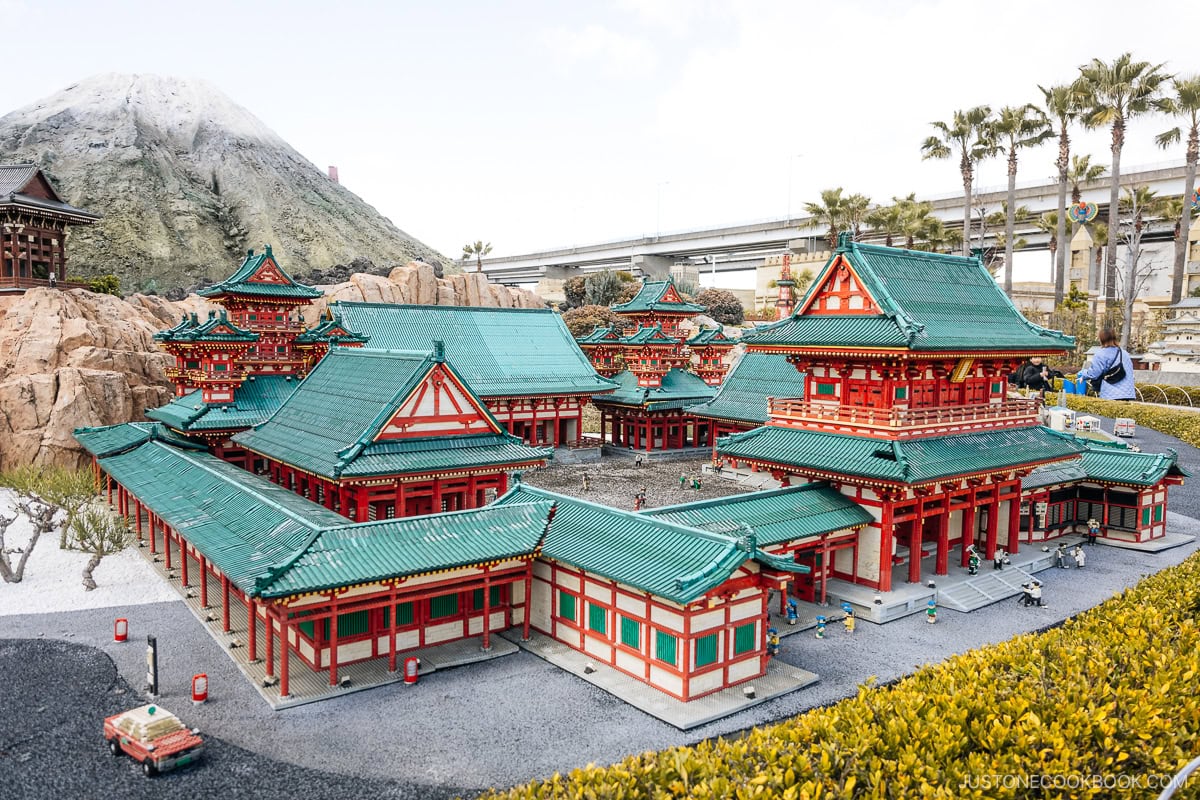
Throughout the park, you can find various restaurants, cafes, and food stalls offering Lego-themed foods, including Lego brick-shaped fries and burgers.
Ghibli Park
Ghibli Park is the latest attraction in Hayao Miyazaki’s magical world of Studio Ghibli, having opened in November 2022 in western Nagoya.

The theme park is located within the Expo 2005 Aichi Commemorative Park and has five distinct areas. Some areas require specific tickets, and others have designated time frames.
Read our complete guide here for full details!

The main area is Ghibli’s Grand Warehouse. As you walk through unassuming doors, you are immediately whisked away into the world of Studio Ghibli. There are 14 scenes from 13 films, with popular spots including the train scene featuring No Face, a true-to-scale Laputian Robot (previously only available at Tokyo’s Ghibli Museum in Mitaka), and a small recreation of the world of Arrietty.

You can also enjoy an exclusive short film at the theater and sample various foods and snacks at the Transcontinental Flight Café. At the top, just before the exit, you can pick up unique Studio Ghibli goods and souvenirs.
Outside the Grand Warehouse, you can explore the remaining four locations. Hill of the Youth showcases monuments from Whisper of the Heart, Dondoko Forest houses everyone’s favorite Totoro, and Mononoke Village portrays the mystical world of Princess Mononoke.

The latest addition to the park, Valley of the Witches, is the most extensive, curated, and awe-inspiring area. Here, you can immerse yourself in the fantastical worlds of Kiki’s Delivery Service and Howl’s Moving Castle. Speaking of which, Howl’s castle is a must-visit. The attention to detail is unbelievable, from the living room and Calcifer’s furnace to Howl’s bedroom adorned with countless ornaments; it truly feels like you are living in his castle.

Ghibli Park covers over 18 acres, so be prepared to do a lot of walking! Shuttle buses run between each area, but they are often crowded, so be sure to leave enough time to travel between spots.
Osu Kannon Temple and Shopping Street
Lastly, in the heart of downtown Nagoya, you’ll find the Osu Kannon Temple and the Osu Shopping District. The temple, a significant Buddhist landmark, was originally built during the Kamakura Period (1192-1333) in Gifu Prefecture. However, due to repeated flooding, the renowned shogun Tokugawa Ieyasu relocated it to its current location in 1612.
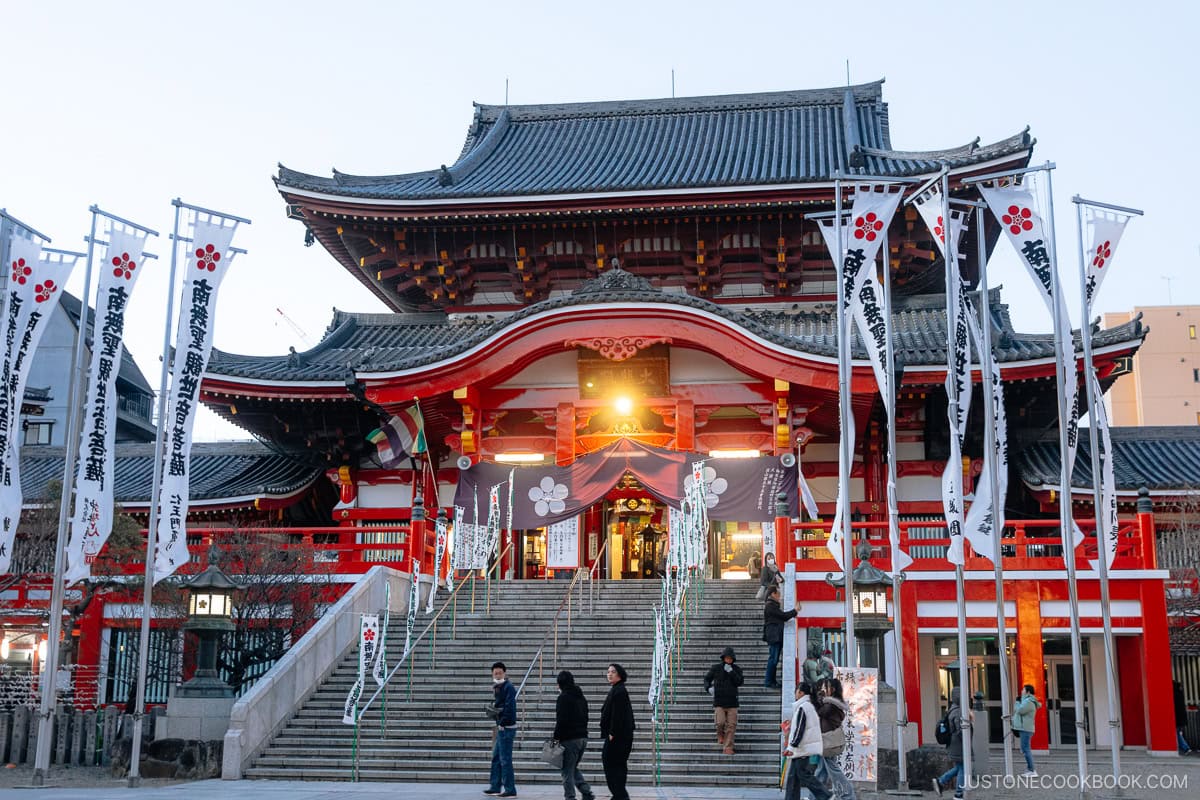
The main point of worship is a wooden statue of Kannon, the goddess of mercy, carved by Kobo Daishi, one of the most influential monks in Japanese Buddhism. You can also find the Shinpukuji Library, which houses 15,000 classic Japanese and Chinese texts, some of which are designated as Important Cultural Properties. On the 18th and 28th of each month, you can enjoy a small antique market in front of the temple.
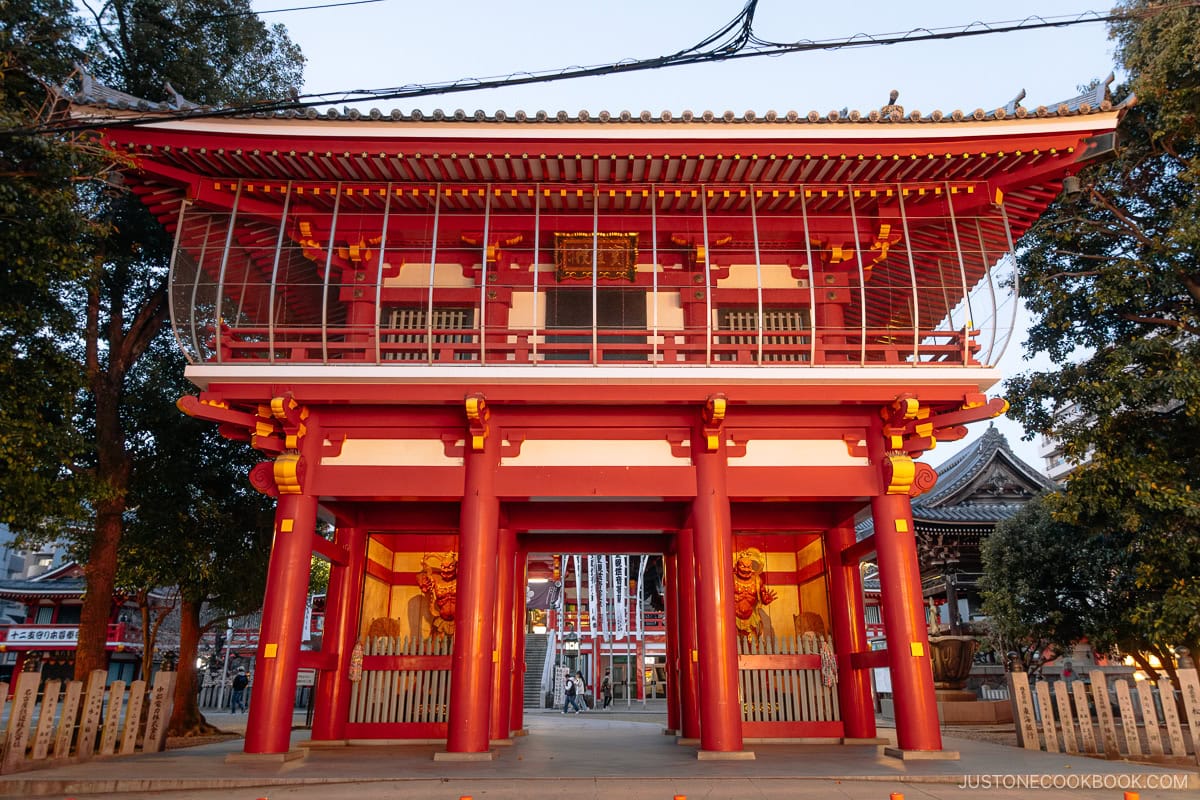
The temple is a tranquil escape, situated just before the bustling shopping streets that lie ahead.

Osu Shopping District is filled with over 1,200 restaurants, cafes, and shops. You can find everything from second-hand stores and arcades to electronics and maid cafes. The area is always lively, with street performers, dancers, and cosplayers, where you can feel the heart of Nagoya beat.

The shopping streets also host various major Nagoya events throughout the year, including the Osu Summer Festival in August, the Osu Daido-chonin Festival in October, and the Osu Setsubun Takarabune Gyoretsu in February.

With its rich ties to Japan’s three most legendary samurai and its position as the country’s fourth-largest city, Nagoya presents a vibrant mix of history, culture, and contemporary attractions. I promise you’ll have a fantastic time exploring the city.
Also, don’t miss our Nagoya Food Guide to learn about its local delicacies!








